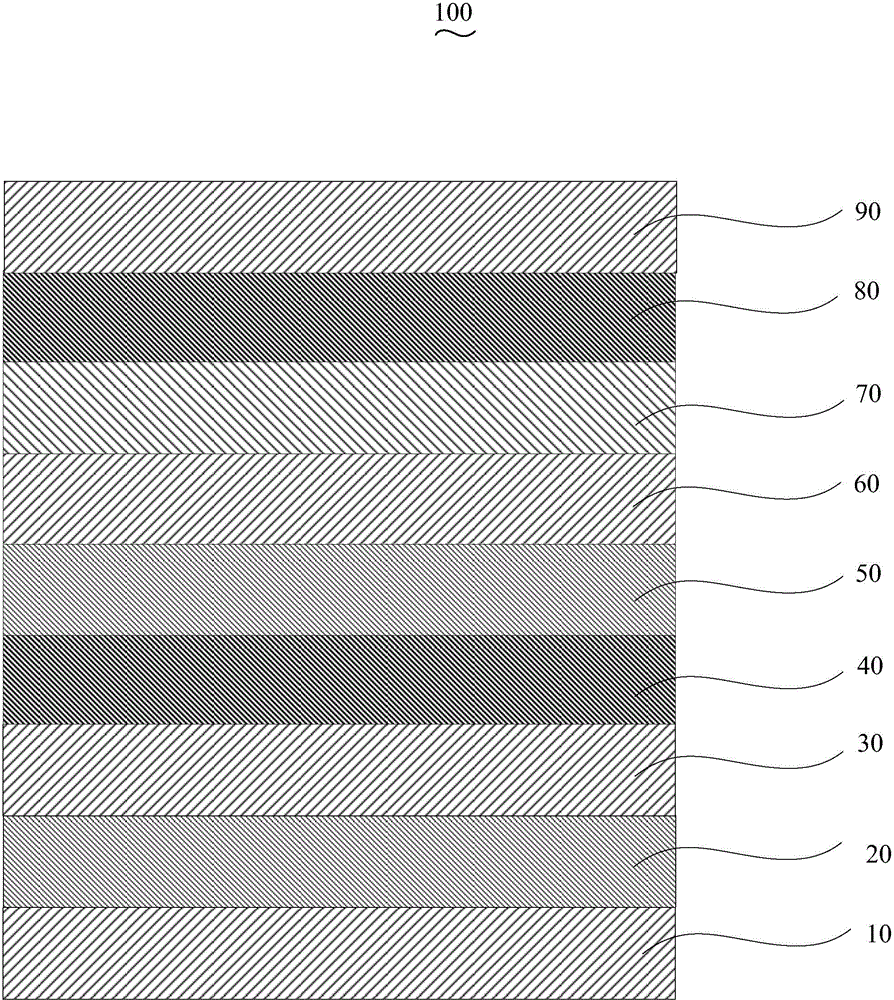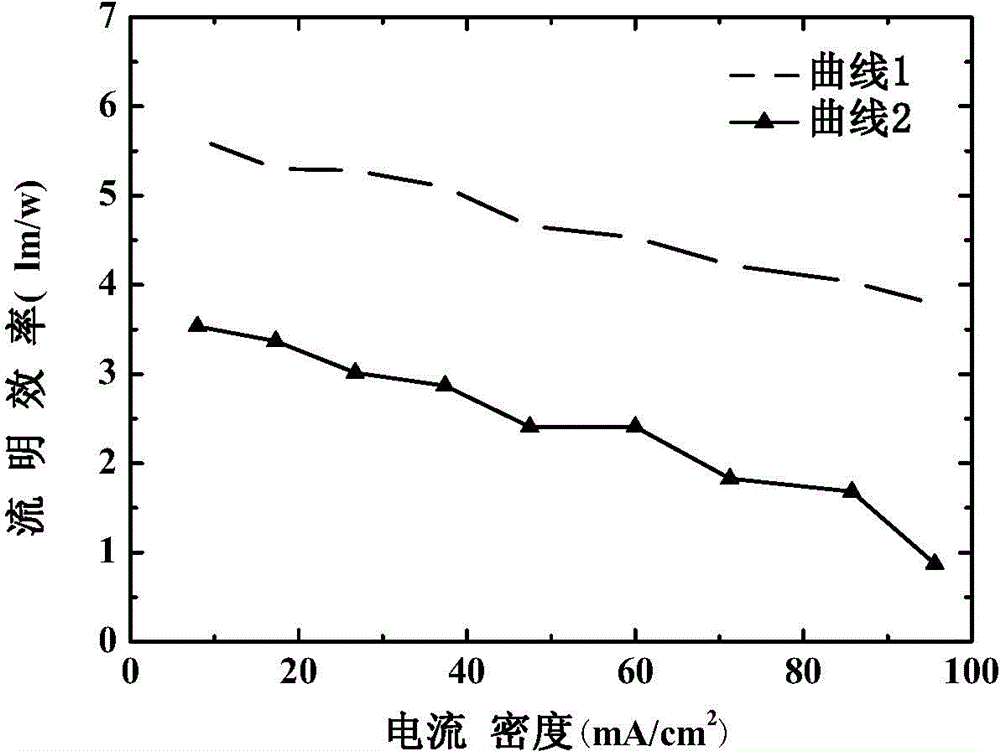Organic electroluminescence device and preparation method thereof
An electroluminescence device and luminescence technology, which is applied in the direction of electric solid-state devices, semiconductor/solid-state device manufacturing, electrical components, etc., can solve the problems of poor refractive index, loss of total reflection, low light extraction performance, etc., to improve luminous efficiency, Long life and low barrier effect
- Summary
- Abstract
- Description
- Claims
- Application Information
AI Technical Summary
Problems solved by technology
Method used
Image
Examples
preparation example Construction
[0035] The preparation method of the organic electroluminescence device 100 of an embodiment, it comprises the following steps:
[0036] Step S110 , preparing the scattering layer 20 on the surface of the glass substrate 10 by electron beam evaporation.
[0037] The scattering layer 20 is formed on one side surface of the glass substrate 10 . The scattering layer 20 includes a luminescent material, a compound material of copper and a compound material of rhenium, and the scattering layer 20 is prepared by electron beam evaporation on the surface of the glass substrate 10, and the material of the luminescent material is selected from 4-(dinitrile methyl) -2-Butyl-6-(1,1,7,7-tetramethyljulonedine-9-vinyl)-4H-pyran (DCJTB), 9,10-di-β-naphthylene Anthracene (ADN), 4,4'-bis(9-ethyl-3-carbazolevinyl)-1,1'-biphenyl (BCzVBi) and 8-hydroxyquinoline aluminum (Alq 3 ), the copper compound material is selected from cuprous iodide (CuI), cuprous oxide (Cu 2 O), at least one of copper ph...
Embodiment 1
[0056] The structure prepared in this example is glass substrate / Alq 3 :Cu 2 O:Re 2 o 7 / ITO / MoO 3 / NPB / Alq 3 / TAZ / CsF / Ag organic electroluminescent device, in this embodiment and the following embodiments, " / " indicates a layer, and ":" indicates doping.
[0057] The glass substrate is N-LASF44. After rinsing the glass substrate with distilled water and ethanol, soak it in isopropanol for one night. Prepare the scattering layer on the glass substrate, the luminescent material of the scattering layer, the compound material of copper and the compound material of rhenium, and prepare the scattering layer on the surface of the glass substrate by electron beam evaporation, and the material is Alq 3 :Cu 2 O::Re 2 o 7 , Alq 3 , Cu 2 O and Re 2 o 7 The mass ratio is 10:2.2:1, and the thickness is 400nm. Then ITO is prepared on the scattering layer with a thickness of 100nm, which is prepared by magnetron sputtering; the hole injection layer is prepared by evaporation: th...
Embodiment 2
[0064] The structure prepared in this example is glass substrate / DCJTB:CuI:ReO 2 / IZO / MoO 3 / TAPC / ADN / Bphen / Cs 2 CO 3 / Au organic electroluminescent devices.
[0065] The glass substrate is N-LAF36. After rinsing the glass substrate with distilled water and ethanol, soak it in isopropanol for one night to prepare a scattering layer on the glass substrate. The scattering layer is prepared by electron beam evaporation on the surface of the substrate, and the material is DCJTB:CuI:ReO 2 , DCJTB, CuI and ReO 2 The mass ratio is 8:2:1, and the thickness is 500nm. Then IZO is prepared on the scattering layer with a thickness of 80nm, which is prepared by magnetron sputtering; the hole injection layer is evaporated, and the material is MoO 3 , with a thickness of 40nm; evaporated hole transport layer: the material is TAPC, with a thickness of 45nm; evaporated luminescent layer: the selected material is ADN, with a thickness of 8nm; evaporated electron transport layer, the mater...
PUM
 Login to View More
Login to View More Abstract
Description
Claims
Application Information
 Login to View More
Login to View More - R&D
- Intellectual Property
- Life Sciences
- Materials
- Tech Scout
- Unparalleled Data Quality
- Higher Quality Content
- 60% Fewer Hallucinations
Browse by: Latest US Patents, China's latest patents, Technical Efficacy Thesaurus, Application Domain, Technology Topic, Popular Technical Reports.
© 2025 PatSnap. All rights reserved.Legal|Privacy policy|Modern Slavery Act Transparency Statement|Sitemap|About US| Contact US: help@patsnap.com


